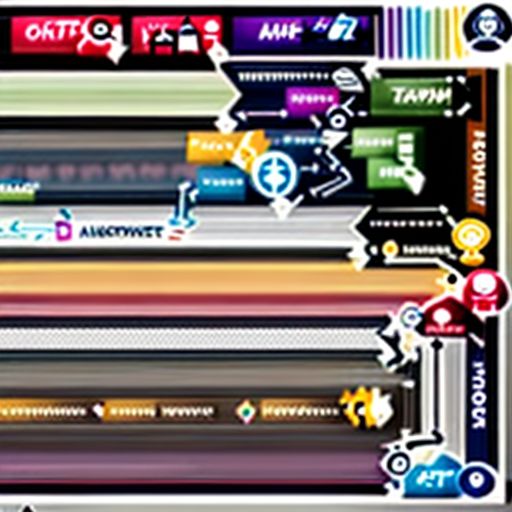In today’s competitive business landscape, providing an exceptional customer experience is no longer a luxury, but a necessity. A positive customer experience can lead to increased loyalty, positive word-of-mouth referrals, and ultimately, higher revenue. But how exactly do you improve the experience you deliver to every customer?
This comprehensive guide explores proven strategies to elevate your customer experience and keep your audience coming back for more.
Understanding Customer Experience
Before diving into the “how-to,” it’s crucial to understand what customer experience, or CX, really means.
Customer experience encompasses every interaction a customer has with your business, from their initial awareness of your brand to their post-purchase interactions. It’s the sum total of their feelings, perceptions, and memories associated with your company.
Why is Customer Experience Important?
A great customer experience translates to tangible business benefits. Here’s why it matters:
- Increased Customer Loyalty: When customers have positive experiences, they’re more likely to return for repeat business.
- Enhanced Brand Advocacy: Happy customers become brand advocates, recommending your products or services to friends and family.
- Improved Reputation: Positive customer experiences contribute to a strong brand reputation, attracting new customers and strengthening your market position.
- Higher Profits: Loyal customers tend to spend more, boosting your bottom line.
Key Strategies to Improve Customer Experience
1. Know Your Customers Inside and Out
The foundation of a great customer experience is a deep understanding of your target audience.
- Develop Buyer Personas: Create detailed profiles representing your ideal customers, including their demographics, motivations, pain points, and preferred communication channels.
- Conduct Customer Surveys: Gather direct feedback from your customers about their experiences, both positive and negative.
- Analyze Customer Data: Leverage data analytics to identify patterns and trends in customer behavior, preferences, and pain points.
2. Map Your Customer Journey
A customer journey map is a visual representation of every touchpoint a customer has with your business.
- Identify Touchpoints: Pinpoint all the stages a customer goes through, from initial awareness to purchase and beyond.
- Analyze Customer Emotions: At each touchpoint, consider how customers might be feeling and identify potential pain points.
- Optimize for a Seamless Experience: Use the insights gained to streamline interactions and eliminate any roadblocks or frustrations.
3. Personalize the Experience
In today’s digital age, customers expect personalized experiences.
- Use Customer Data: Leverage the information you’ve gathered to personalize communications, offers, and recommendations.
- Implement CRM Systems: Utilize Customer Relationship Management (CRM) software to manage customer interactions and provide personalized support.
- Tailor Content and Offers: Deliver relevant content, product suggestions, and promotions based on individual customer preferences.
4. Prioritize Excellent Customer Service
Customer service is a critical aspect of the overall experience.
- Provide Omnichannel Support: Offer consistent and seamless support across multiple channels, including phone, email, live chat, and social media.
- Empower Your Staff: Equip your customer service team with the knowledge, tools, and authority to effectively resolve issues and exceed expectations.
- Collect Feedback and Make Improvements: Regularly seek feedback on your customer service and use it to identify areas for improvement.
5. Leverage the Power of Technology
Technology plays a crucial role in enhancing the customer experience.
- Implement Chatbots: Use chatbots to provide instant answers to common questions, offer 24/7 support, and free up your human agents for more complex issues.
- Utilize Self-Service Options: Offer online knowledge bases, FAQs, and video tutorials to empower customers to find solutions independently.
- Invest in CRM and Marketing Automation: Automate tasks, personalize communications, and manage customer interactions efficiently with the right technology.
improvement.daohocthuat.com/wp-content/uploads/2024/07/customer-journey-map-669602.jpg" alt="Customer Journey Map" width="512" height="512">Customer Journey Map
Frequently Asked Questions about Improving Customer Experience
1. What is the difference between customer service and customer experience?
While related, customer service is just one aspect of the broader customer experience. Customer service refers to the assistance provided to customers during interactions, while customer experience encompasses all touchpoints and interactions a customer has with your brand.
2. How can I measure customer experience?
Several metrics can be used to measure CX, including Net Promoter Score (NPS), Customer Satisfaction Score (CSAT), Customer Effort Score (CES), and Churn Rate.
3. What is the role of employee experience in customer experience?
Happy and engaged employees are more likely to deliver exceptional customer experiences. Creating a positive work environment and investing in employee training and development can significantly impact CX.
Conclusion
Improving customer experience is an ongoing process that requires a customer-centric approach, a commitment to continuous improvement, and a willingness to adapt to evolving customer expectations. By focusing on the strategies outlined in this guide, you can create positive, memorable experiences that foster customer loyalty, drive business growth, and give your brand a competitive edge.
We’d love to hear from you! Share your thoughts, experiences, and any questions you have about improving customer experience in the comments section below. Let’s start a conversation!


